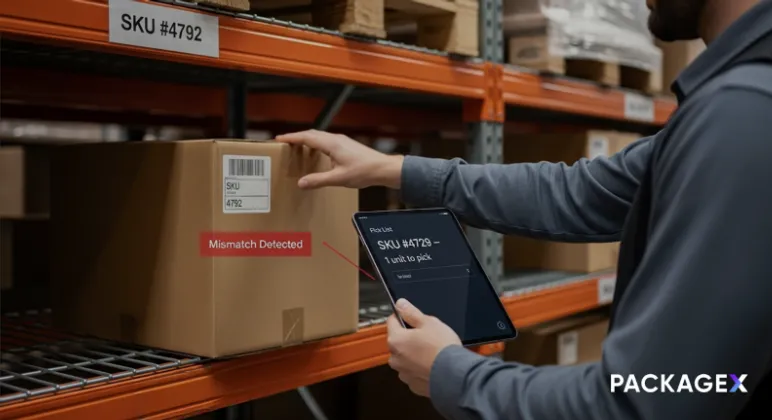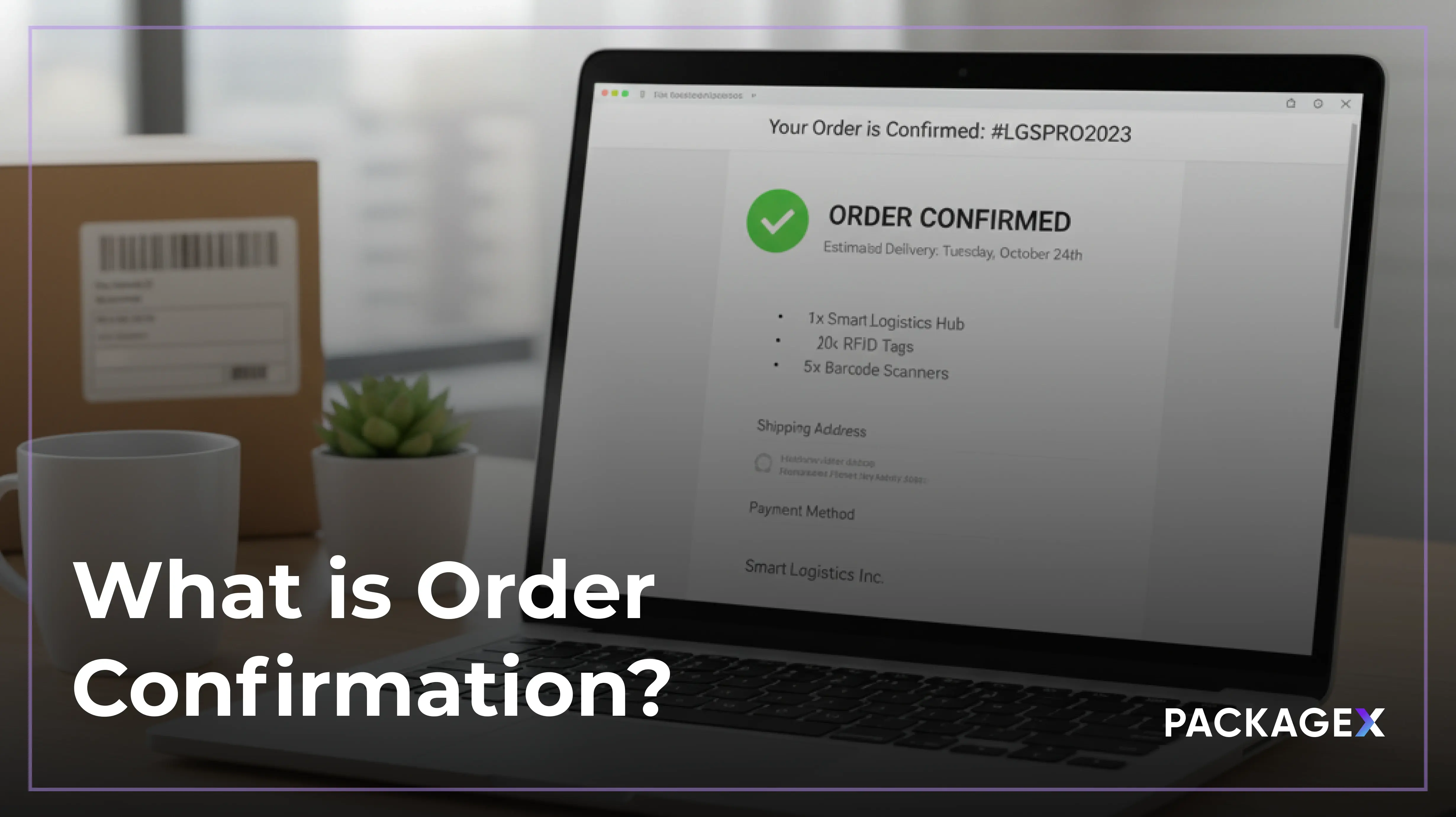"We can only receive one purchase order at a time. If I get a shipment covering 14 different purchase orders, I have to create 14 different receipts."
That quote isn't from some struggling startup warehouse.
It's from a VP of Operations at a well-established 3PL with multiple facilities and millions in revenue.
And here's the kicker: They thought this was normal.
If you're reading this, I'm guessing your inventory accuracy sits somewhere between 80-90%.
Maybe you've chalked it up to "the nature of the business." High volume. Multiple clients. Complex SKUs. Staff turnover.
But here's what I learned after analyzing over 500 recorded calls with 3PL operators, warehouse managers, and operations directors:
The gap between 85% accuracy and 99% accuracy has nothing to do with your people.
It has everything to do with five manual bottlenecks you probably don't even realize are killing you.
Let me show you what I found.
What We Did (And Why You Should Care)
Over the past six months, our team analyzed hundreds of conversations with 3PL operations teams.
Not surveys. Not interviews. Real recorded calls where warehouse managers were solving real problems.
We listened to receiving clerks walk through their dock processes. We heard operations directors explain why they missed their accuracy targets. We recorded IT consultants evaluating warehouse management systems.
And a pattern emerged.
The 3PLs operating at 98-99% accuracy do five things completely differently than everyone else.
The 3PLs stuck at 85%? They all share the same five blind spots.
Here's the uncomfortable part:
You probably have at least three of them.
Let me walk you through what we found.
Blind Spot #1: You're Receiving Blind (And You Don't Even Know It)
Here's a conversation we recorded with a warehouse manager at a mid-sized 3PL:
Interviewer: "Walk me through what happens when a truck shows up."
Manager: "Well, sometimes we get an advance ship notice. Sometimes we don't. When we don't, we just... figure it out. We manually look at the packing slip, open everything up, and try to match it to a purchase order."
Interviewer: "How often does that happen?"
Manager: "Maybe 40% of inbound shipments?”
Let that sink in.
40% of their receiving happens blind.
No advance notice. No system validation. Just a warehouse clerk with a clipboard trying to figure out what showed up versus what was supposed to show up.
Now here's where it gets worse.
Another operations director told us: "The container said there were 2,000 units. When we counted, there were 800."
A 60% shortage.
Want to know when they discovered it?
Three days later. During a cycle count. After they'd already told their client the inventory was received and available.
Here's Why Blind Receiving Destroys Accuracy
When you don't know what's coming, you can't catch discrepancies at the dock.
You can't validate quantities. You can't flag damages immediately. You can't escalate shortages before the driver leaves.
Instead, you're playing detective three days later, trying to figure out if those "missing" 1,200 units were:
- Never shipped in the first place
- Sitting in the wrong location because someone coded it wrong
- Actually received but not logged because your clerk was rushing through 50 other shipments
One IT consultant we spoke with summarized it perfectly:
"Can we do blind shipment receiving in theory? Sure. But then we can't track overages, shortages, or damages, right? Because we don't know what to compare against."
Exactly.
What The 99% Accuracy 3PLs Do Instead
They don't receive anything blind.
Period.
If an ASN doesn't exist in their system, the shipment doesn't get processed until it does.
Sounds harsh, right?
But here's what happens:
- Discrepancies are caught in seconds (not days)
- Drivers are still on-site to resolve issues
- Inventory counts are accurate from the moment of receipt
- Client trust stays intact
The data backs this up:
3PLs with digitized ASN processes report 95-99% receiving accuracy compared to 67-85% accuracy with manual receiving.
That's not a small gap.
That's the difference between clients who trust your counts and clients who send their own team to audit your warehouse.
Blind Spot #2: Your Cycle Counts Are Theater
I heard this same story at least a dozen times:
"We print count sheets every quarter. Walk the warehouse with clipboards. Write down numbers. Go back to the office. Key everything into the system. Then print discrepancy reports and walk the warehouse again to investigate."
One distribution manager called it what it is:
"That process is incredibly painful. We print, we write, we enter, we print again. It's a nightmare."
But here's the real problem with this approach:
Cycle counts don't prevent inventory errors. They just tell you about them weeks after they've already caused damage.
Let me paint you a picture.
You discover a 200-unit discrepancy during your quarterly cycle count.
Sounds manageable, right?
Except that inventory has already been:
- Promised to three different clients
- Included in your available-to-promise calculations
- Potentially shipped (or not shipped when it should have been)
- Triggering stockout alerts or preventing replenishment orders
By the time you find the error, you're not fixing a problem.
You're managing a crisis.
The Hidden Cost Nobody Talks About
Manual cycle counts introduce their own errors.
When your team is hand-keying hundreds of SKU counts, mistakes happen.
We heard about fat-finger errors. Transposed numbers. Illegible handwriting that gets misread during data entry.
One operations manager admitted: "Our accounting team spends two and a half days every period chasing down partial POs and inventory discrepancies."
Two and a half days.
Every single period.
That's not operational efficiency. That's operational hemorrhaging.
What The 99% Accuracy 3PLs Do Instead
They don't do quarterly cycle counts.
They do daily rolling counts. With mobile scanners. Guided by their WMS.
Here's how it works:
- System tells the warehouse associate: "Count these 15 SKUs in Aisle 4, Bin 12"
- Associate scans the location. Scans each item. Enters quantities.
- Discrepancies are flagged immediately.
- Counts are validated in real-time against recent receiving and picking activity.
No clipboards. No manual data entry. No waiting weeks to discover problems.
The numbers don't lie:
3PLs using mobile-guided cycle counting complete counts in 60% less time with 98.5% accuracy versus ~85% accuracy with clipboard-based counts.
More accurate. Less time. Immediate problem resolution.
That's not a nice-to-have.
That's table stakes for 99% accuracy.
Blind Spot #3: You Can't See What Your Pickers Are Actually Picking
Here's a scenario that came up in multiple conversations:
The pick list says SKU #4729.
The picker grabs what looks like SKU #4729.
It's actually SKU #4792.
Close enough, right?
Wrong.
But here's the thing: without scan verification at the pick stage, that wrong item gets packed, shipped, and delivered before anyone notices.
We spoke with one 3PL warehouse that described their process this way:
"They generate pick lists, go to a packing station, and then scan items into the box."
Notice what's missing?
Any verification that they picked the correct items before packing.
They're verifying at the pack. Not at pick.
That's like checking if you grabbed the right ingredients after you've already cooked the meal.
Why This Destroys Accuracy
Manual pick-and-pack relies on three things:
- Perfect eyesight
- Perfect attention to detail
- Perfect conditions (good lighting, no distractions, clear labels)
In a real warehouse at 4 PM on a Friday with 200 orders left to fulfill?
None of those exist.
The result:
- Wrong items shipped
- Right items sitting in the wrong locations
- Inventory counts that make zero sense because the WMS thinks Item A went out when Item B actually did
- Client complaints about receiving the wrong SKU
- Expensive returns and re-ships
One warehouse manager told us: "The sales team looks at the system and says, 'We have 10 units, I can sell them.' Then they sell them and the units don't exist."
Phantom inventory.
The silent killer of 3PL credibility.
What The 99% Accuracy 3PLs Do Instead
Scan verification at every stage.
Pick: Can't mark an item as picked until the barcode is scanned and matches the pick list.
Pack: Can't close the carton until every item scanned matches the order.
Ship: Can't generate the shipping label until pack verification is complete.
It adds literally 3 seconds per item.
And it eliminates 90% of pick errors.
That's why automated 3PLs consistently hit 99%+ pick accuracy while manual operations struggle to break 90%.
Blind Spot #4: Your "System of Record" Is Actually a System of Lag
Here's a question we asked every 3PL operator:
"When someone receives inventory at the dock, how quickly does your WMS know about it?"
The answers ranged from "immediately" to "by end of day" to (and I'm not making this up) "whenever someone gets around to keying it in."
One operations director described the chaos perfectly:
"A client calls at 10 AM asking about inventory levels. Our WMS says 500 units. Our warehouse has 350 units. Why? Because this morning's receiving hasn't been entered yet. Yesterday's shipments haven't been closed out. And that cycle count from last week revealed discrepancies that 'someone is looking into.'"
This is the fundamental flaw in most 3PL operations:
Real-time inventory in your warehouse. Batch-updated inventory in your WMS.
Why This Creates Cascading Failures
Delayed data entry creates a domino effect:
Hour 1: Receiving clerk is processing 50 inbound pallets. Nothing's in the system yet.
Hour 2: Client calls asking about available inventory for a rush order. You check the WMS. It's wrong.
Hour 3: You tell the client you can fulfill the order. (Based on yesterday's data.)
Hour 4: Warehouse discovers you actually can't fulfill it. (But the client already promised their customer.)
Hour 5: Crisis management mode.
One IT consultant evaluating 3PL systems asked the question that cuts to the heart of this:
"If we're doing blind receiving and the system doesn't know what to expect, how can it tell us what's wrong?"
It can't.
Without real-time data, your WMS is just an expensive spreadsheet that's always 4-8 hours behind reality.
What The 99% Accuracy 3PLs Do Instead
Real-time data capture.
If someone receives it → System knows instantly.
If someone picks it → System updates immediately.
If there's a discrepancy → It's flagged at the dock, not three days later during cycle count.
The results speak for themselves:
3PLs with real-time inventory systems report 30-50% fewer discrepancy investigations and 99%+ inventory accuracy.
Why?
Because problems are caught and corrected in the moment.
Not during next quarter's audit.
Blind Spot #5: You're Drowning in Paper (And Calling It "Process")
Here's the paper trail we heard described for a single inbound shipment:
- Bill of lading (with handwritten carrier notes)
- Packing slip (sometimes missing, often wrong)
- Purchase order (printed from email)
- Receiving discrepancy form (handwritten)
- Inspection notes (handwritten)
- Sign-off sheet (handwritten)
Now multiply that by 50+ shipments per day.
One receiving manager described what happens next:
"We have to follow up with the vendor and say, 'Yeah, you're short.' But first we have to find the paperwork, decipher the handwriting, and manually enter corrections."
The Three Fatal Problems With Paper
Problem #1: Data Entry Errors
Every time someone transcribes handwritten notes, there's a 5-10% error rate.
Not because people are careless.
Because humans aren't OCR machines.
Problem #2: Lost Documentation
Can't resolve a discrepancy if you can't find the packing slip.
And in a warehouse processing hundreds of shipments per week, paperwork disappears.
It gets left on a pallet. Thrown away by accident. Filed in the wrong place.
Problem #3: Delayed Discovery
By the time someone keys in the receiving notes, three things have happened:
- The driver is gone (can't verify the shortage with them)
- The product is put away (can't easily inspect for damage)
- The client has been notified that inventory is available (which may not be true)
The downstream chaos is real.
Remember that operations manager who told us about phantom inventory?
Here's the full quote:
"The sales associates look at the system and say, 'Okay, now we have 10 items of this, I can sell them.' And when they sell them, they don't exist."
That's what happens when paper-based receiving creates a 4-8 hour lag between physical reality and system reality.
What The 99% Accuracy 3PLs Do Instead
Digital document capture at the point of receiving.
One scan. All data extracted. Automatically matched against POs.
- No transcription errors
- No lost paperwork
- No phantom inventory
- No 4-hour lag between receiving and system updates
Problems are caught in seconds, not days.
The Math That Nobody Wants to Admit
Here's the uncomfortable truth about manual processes:
You cannot hit 95%+ inventory accuracy with manual processes.
It's not a people problem.
It's a math problem.
Every manual touchpoint introduces a 3-5% error rate:
- Manual data entry: 3-5% error rate
- Visual verification without scanning: 5-8% error rate
- Paper documentation: 5-10% error rate
- Delayed system updates: 10-15% "temporary" discrepancies
Now stack those together.
Even with great people and solid training, you're fighting to stay above 85%.
Meanwhile, 3PLs that have eliminated these manual touchpoints are operating at 98-99% accuracy.
Not because they have better people.
Because they removed the failure points.
What Separates The 99% Accuracy 3PLs From Everyone Else
After analyzing 500+ operations conversations, here's what we found:
The 3PLs consistently hitting 99% accuracy have done five things:
1. They Eliminated Blind Receiving
- Digital ASN processing (advance ship notices synced automatically)
- No shipment processed without a PO in the system
- Discrepancies caught while the driver is still on-site
2. They Replaced Quarterly Audits With Daily Precision
- Mobile-guided cycle counting (system directs you to what needs counting)
- Scan verification (no manual data entry)
- Instant discrepancy resolution workflows
- Rolling counts instead of quarterly chaos
3. They Added Verification at Every Touch Point
- Scan-to-pick verification (can't pick the wrong item)
- Scan-to-pack confirmation (every item verified before carton closes)
- Real-time inventory deduction (WMS updates as you pick, not hours later)
4. They Killed The Paper Trail
- Digital document capture at receiving
- Photo documentation of damages/discrepancies
- Automated exception flagging (system alerts on shortages immediately)
- No transcription errors, no lost paperwork
5. They Made Real-Time Data Non-Negotiable
- If someone receives it → System knows instantly
- If someone picks it → System updates immediately
- If there's a problem → It's flagged in the moment, not discovered days later
The result?
98-99% inventory accuracy. Clients who trust your counts. Operations teams who spend time growing the business instead of managing crises.
The Question Isn't "Can We Afford to Automate?"
The question is: "How much is 85% accuracy actually costing us?"
Let's do the math on just one client.
They ship 10,000 units per month through your facility.
At 85% accuracy, that's 1,500 units with inventory discrepancies per month.
Now assume:
- 30% result in stockouts (client loses sales)
- 30% result in overstock (you're storing phantom inventory)
- 40% require investigation and correction (labor cost)
Even if each incident only costs $50 to resolve (conservative), that's $75,000 per year in error-related costs.
For one client.
Now multiply that across your client base.
Add in the intangible costs:
- Client trust erosion
- Lost business when clients take volume elsewhere
- Sales team spending time managing crises instead of growing accounts
- Premium freight charges to fix stockout emergencies
Suddenly, that investment in automation doesn't look like a cost.
It looks like the only rational decision.
Here's What Happens Next
You have two choices.
Choice #1: Keep doing what you're doing.
Hope that more training, more meetings, and "trying harder" will somehow overcome the 3-5% error rate built into every manual touchpoint.
Watch your accuracy hover around 85% while your clients quietly start conversations with competitors hitting 99%.
Choice #2: Eliminate the blind spots.
Remove the manual failure points that make 99% accuracy mathematically impossible.
Join the 3PLs who have figured out that the problem isn't your people—it's your process.
The ones we analyzed who made this shift didn't just improve accuracy.
They transformed their business:
- 30-50% reduction in discrepancy investigations
- 60% reduction in cycle count time
- 99%+ inventory accuracy
- Clients who actually trust their inventory counts
- Operations teams who spend time scaling instead of firefighting
The 3PLs That Survive the Next Five Years
Here's what we learned from 500+ conversations:
The 3PLs winning business right now aren't the ones with the lowest prices.
They're the ones clients can trust.
And trust starts with one number: Inventory accuracy.
If you're stuck at 85%, you're not competing on price.
You're competing on hope.
Hope that your clients don't audit too closely.
Hope that your next shortage doesn't cause a stockout.
Hope that your competitors don't figure this out before you do.
But some of them already have.
And they're operating at 99%.
The gap between where you are and where they are isn't talent, training, or budget.
It's removing five blind spots that you probably didn't even know you had.
The question is: How long can you afford to wait?


.webp)

